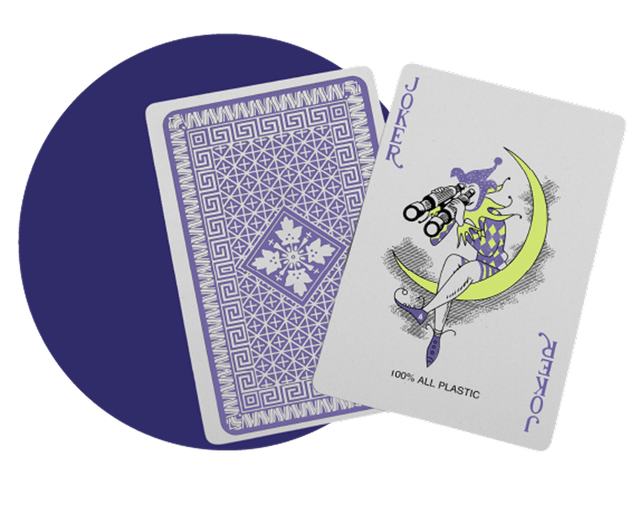
AI and the Retail Marketer’s Future
How AI transforms strategy and processes, driving the adoption of Positionless Marketing
Exclusive Forrester Report on AI in Marketing

All relationships have their own interaction frequency. Some are intense – we meet weekly, or even speak daily. Other relationships may be just as long-standing and loyal, but with a much lower interaction frequency – we may have very significant relationships with people with whom we meet every few months or even only once a year.
Relationships of different interaction frequencies also end differently. For the more intensive relationships, a silence of a few weeks or a few months obviously signals that something is amiss or even that the relationship has derailed. In the context of our more moderate relationships, a silence of a few months or even a year may be par for the course. So, while my mom may think that I totally forgot about her if I haven't called in four days, other loved ones and far-away friends will still consider me a part of their lives even after months with no contact at all.
The same goes for relationships between businesses and their customers. Since customers interact with businesses in varying frequencies, how can a brand tell when a relationship is over? In marketing speak: When do they know that a customer has actually churned? When is the right time to engage with risk-of-churn customers before it's too late? And, when is the right time to launch reactivation efforts for customers who have already churned?
From our experience working with customer marketers in various industries, we see that most marketers – those who are paying attention to customer churn at all – use a simple, time-based metric. Without any regard for each customer's particular activity frequency, they automatically consider a customer as churned after, say, three months. This one-size-fits-all approach ignores the customer relationship's interaction frequency and usually leads to poorly timed and ineffective marketing actions.
A far better approach is for businesses to work with individualized churn timing definitions. We recommend doing this by calculating each customer's individual churn factor, an approach that defines customer churn by taking into account each customer's individual activity frequency (e.g., how often has the customer visited, purchased, deposited). The higher the churn factor, the more likely that the customer has already churned, never to return.
Here is the churn factor formula**:**

In order to get a clearer picture of why accurately defining each customer's point of churn is so important, let's compare two hypothetical customers: Cathy and Mike. Both Cathy and Mike are customers at a business which automatically marks customers as churned after 60 days of inactivity. Let's examine how well this approach determines the churn state of each of these two customers.
Let's take a look at Cathy's activity history:

Cathy made her first purchase 240 days ago. Her last purchase was 60 days ago, and she's had a total of four days with purchase activity. Using this information, we can calculate Cathy's churn factor.
We'll start by calculating her activity frequency:
Cathy's frequency = (Longevity – Recency)/(Number of active days – 1) =
(240-60)/(4-1) = 60
where
Longevity = Total number of days Cathy has been a customer
Recency = Days since Cathy's last activity
We see that Cathy is expected to perform an activity once every 60 days.
Now we can plug Cathy's frequency into the churn factor formula:

Cathy's churn factor is 1, meaning we expect her to make another purchase any day now. Since Cathy's activity occurs, on average, every 60 days, it just so happens that automatically marking her as churned after 60 days of inactivity is right on target – if we were to start our reactivation efforts soon, we'd likely succeed.
Now, let's look at Mike's activity history:

Mike made his first purchase 202 days ago. His last purchase was 90 days ago. We can see that he's also had a total of four activity days.
We can now go back to the above formula to calculate Mike's churn factor. First, we'll calculate Mike's frequency:
Mike's frequency = (Longevity – Recency)/(Number of active days – 1) =
(202 – 90)/(4-1) = 37.3
Mike is expected to perform an activity every 37 days.
Now we'll use Mike's frequency to plug it into the churn factor formula from above.

Mike's churn factor is 2.4, meaning that his next activity is taking 2.4X longer than expected. Since Mike usually has an activity day every 37.3 days, on average, waiting until Mike has been inactive for over 60 days is much too long. Furthermore, at 90 days, Mike's chances of returning as a customer have diminished considerably. If we had re-engaged him earlier, when his inactivity had started signaling that he may churn, we would have been more likely to succeed at keeping him engaged. In Mike's case, automatically marking customers as churned after 60 days is leaving money on the table.
What worked for Cathy doesn't work for Mike. In both instances, calculating their individual churn factor provides a more accurate indication of the point at which they might churn.
Applying a generic "attrition rule" to all customers, i.e., automatically labeling them as churn after a fixed time period, doesn't take into account each customer's behavior in context. Imagine you'd use the same formula in your personal relationships: only calling your mom after 60 days of silence will get you a tongue-lashing, while suddenly engaging with distant friends after the same time period may lead them to think that you're acting strangely.
Failing to understand your customers in the context of their own particular behavior patterns can cause similar types of miscommunications, and can hurt your relationships with your customers. (This also holds true for inaccurately determining all your customer lifecycle stages.)
Individually calculating the churn factor for each customer gives you a deeper and more accurate understanding of each customer's behavior – and a much better chance at fostering long-lasting relationships. Armed with this understanding, businesses can tailor highly personalized campaigns to customers at the right time to encourage greater customer loyalty and engagement.
Exclusive Forrester Report on AI in Marketing
In this proprietary Forrester report, learn how global marketers use AI and Positionless Marketing to streamline workflows and increase relevance.


Writers in the Optimove Team include marketing, R&D, product, data science, customer success, and technology experts who were instrumental in the creation of Positionless Marketing, a movement enabling marketers to do anything, and be everything.
Optimove’s leaders’ diverse expertise and real-world experience provide expert commentary and insight into proven and leading-edge marketing practices and trends.


